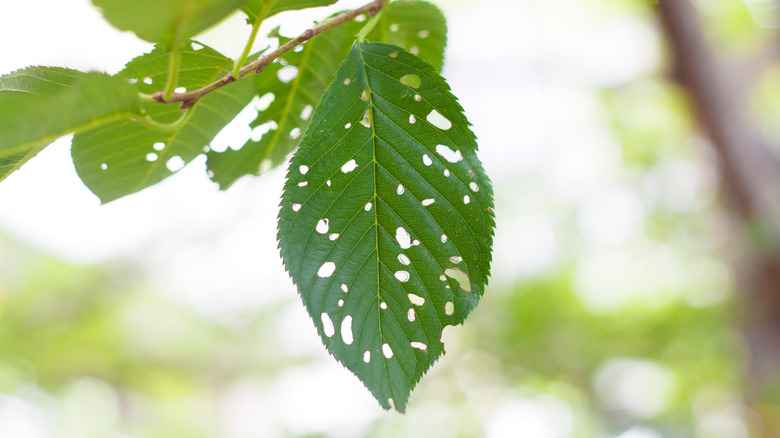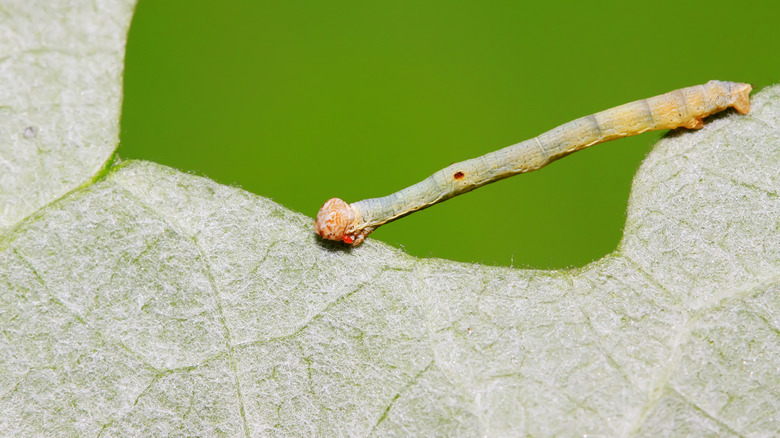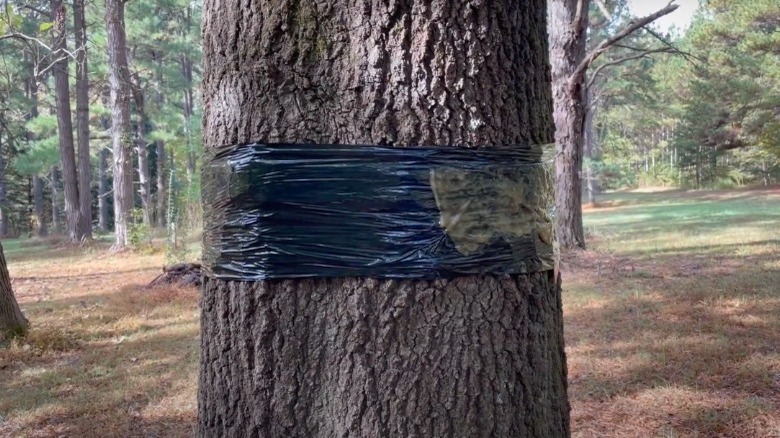What It Means If Your Shade Trees Are Losing Leaves
We may receive a commission on purchases made from links.
Are your beloved shade trees losing their brand-new leaves in late spring or early summer? If you notice tiny holes appearing and spreading in the foliage to the point where the entire leaf is gone after a few weeks, look for signs of cankerworms. These caterpillars are about an inch long and range in color from green to greenish-brown or even black. You will find them actively eating the trees' leaves.
Spring (Paleacrita vernata) and fall (Alsophila pometaria) cankerworms are two different species of the insect. They share many similarities, including their appearance and penchant for destroying trees' foliage. Although the adult moths of these species emerge from the soil at different times of the year, their larvae both hatch in mid-spring and begin to wreak havoc by feasting on leaves. It doesn't really matter whether you're suffering from a fall or spring cankerworm infestation, as the two species' larvae feed on the same trees, including maple, ash, apple, elm, oak, cherry, linden, and others. Cankerworm infestations happen periodically, peaking and falling for about three years at a time. Below, you'll learn how to spot and confirm a cankerworm infestation in your yard and steps for eradicating the pests so you can successfully grow a flourishing shade tree garden.
Signs of a cankerworm infestation in your yard
One of the tell-tale signs of a cankerworm problem is holes in the leaves of trees you may be using for shade. You may not know that these pests have a foothold in your yard until the eggs hatch, since the eggs are well-concealed in the trees' bark and you have to look for them to find them. But when the hungry larvae emerge, they begin to chew on the foliage and leave holes between the veins. The holes are initially tiny, measuring less than ¼-inch. However, they get larger as the larvae continue their feast. Eventually, you may find that the leaves are gone and only the mid veins are left hanging off the stems. If you let the infestation continue for more than two years, the damage may extend beyond the leaves, and you'll need to actively salvage the stressed trees to prevent further decline.
Apart from the damage to trees and their foliage, cankerworms may leave a few other visible yet unsightly clues of their presence. As the larvae slowly evolve into pupae, they make their way from the trees to the ground on silken threads. You'll likely see this downward migration, and the cankerworm caterpillars may briefly invade parts of your yard that surround the trees where they hatched. Meanwhile, the adult moths that appear later may seek shelter on your home's siding. Alas, there isn't much you can do to combat cankerworms during these two life phases.
How to safeguard your shade trees from cankerworms
While cankerworms may be difficult to eradicate in the later stages of their life, the second week after the larvae hatch presents a golden opportunity to eliminate cankerworms from your trees. At this stage, the caterpillars haven't grown to their full size yet, nor have they had enough time to cause extensive damage. To establish when the caterpillars enter the second week of their life, you'll need to find and monitor the eggs on the trees' bark during early spring. If you find that the eggs suddenly have holes in them, it means that the larvae have hatched. Wait 10 days after this discovery, then spray the trees with a pesticide. Bacillus thuringiensis is a natural pesticide that doesn't contain any chemicals and instead unleashes biological warfare on the cankerworm larvae. Alternatively, you can use chemical pesticides that contain carbaryl, malathion, permethrin, cyfluthrin, or esfenvalerate.
Instead of battling cankerworms with insecticides, you can band your shade trees to prevent the adult insects from laying eggs on them. Banding involves wrapping a sticky barrier, which you could buy at Home Depot. You wrap the band around the tree after it has shed its foliage for the season. When the adult female moths attempt to climb up the tree to lay eggs, the sticky band traps them and keeps the tree bark egg-free. To catch both fall and spring cankerworm moths, you need to leave the traps on the tree until late spring.


